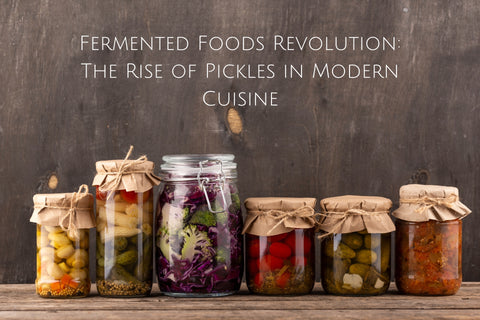Introduction:
Welcome to a flavorful journey through the world of cooking oils! In the vast landscape of culinary choices, selecting the right oil can significantly impact the flavor, texture, and nutritional profile of your dishes. From the fruity richness of olive oil to the tropical aroma of coconut oil, each type of cooking oil offers unique characteristics and benefits. Join us as we explore a variety of cooking oils, their properties, and the best ways to use them in your kitchen.
Understanding Cooking Oils: A Primer

Delve into the basics of cooking oils, including their composition, smoke points, and flavor profiles. Learn how to differentiate between different types of oils and choose the best ones for various cooking methods, from sautéing to frying and baking.
Olive Oil: Liquid Gold of the Mediterranean

Explore the nuances of olive oil, a staple in Mediterranean cuisine known for its rich flavor and heart-healthy benefits. Discover the differences between extra virgin, virgin, and refined olive oil, and learn how to use them in salad dressings, marinades, and cooking.
Here's why olive oil holds such a revered status:
- Rich Flavor Profile: Extra virgin olive oil, in particular, boasts a complex and fruity flavor profile that adds depth and richness to dishes. From its peppery notes to its grassy undertones, each sip or drizzle of olive oil carries the essence of the sun-drenched Mediterranean groves.
- Heart-Healthy Benefits: Olive oil is renowned for its heart-healthy properties, thanks to its high content of monounsaturated fats and antioxidants, such as polyphenols and vitamin E. Regular consumption of olive oil has been linked to reduced risk of heart disease, inflammation, and oxidative stress.
Coconut Oil: A Tropical Twist in the Kitchen

Embark on a culinary adventure with coconut oil, prized for its sweet aroma and high smoke point. Explore its uses in both savory and sweet dishes, from stir-fries and curries to baked goods and desserts. Learn about the unique health benefits of coconut oil and its role in vegan and gluten-free cooking.
- Rich Tropical Aroma: The unmistakable fragrance of coconut oil instantly transports you to sun-drenched beaches and palm-fringed islands. Its sweet, nutty aroma adds a delightful tropical flair to both savory and sweet dishes, making it a favorite ingredient in cuisines around the world.
- High Smoke Point: Coconut oil has a high smoke point, making it ideal for high-heat cooking methods such as frying, sautéing, and roasting. Its stability at high temperatures means that it retains its nutritional properties and flavor, producing crispy and flavorful results without burning or imparting off-flavors.
Avocado Oil: Nutrient-Rich Elixir

Discover the nutritional powerhouse that is avocado oil, packed with heart-healthy monounsaturated fats and vitamins. Learn how to use avocado oil for high-heat cooking, salad dressings, and dips, and explore its subtle flavor profile and creamy texture.
- Nutritional Powerhouse: Avocado oil is rich in monounsaturated fats, particularly oleic acid, which is associated with various health benefits, including improved heart health and reduced inflammation. Additionally, it contains vitamins E and K, antioxidants, and essential nutrients that nourish the body from within.
- Heart-Healthy Properties: The monounsaturated fats found in avocado oil have been shown to lower LDL cholesterol levels and increase HDL cholesterol levels, promoting overall heart health and reducing the risk of cardiovascular disease. Its high oleic acid content makes it an excellent choice for maintaining healthy cholesterol levels.
Canola Oil: Versatile and Affordable

Uncover the versatility of canola oil, a neutral-flavored oil with a high smoke point that's suitable for a wide range of cooking applications. Explore its uses in frying, baking, and as a substitute for butter or margarine in recipes. Learn about its nutritional profile and potential health benefits.
- Neutral Flavor: Canola oil has a mild, neutral flavor that makes it suitable for a wide range of culinary applications. Its subtle taste allows the flavors of other ingredients to shine through, making it a versatile choice for both savory and sweet dishes.
- High Smoke Point: Canola oil has a high smoke point, making it ideal for high-heat cooking methods such as frying, sautéing, and baking. Its stability at high temperatures means that it won't break down or produce harmful compounds, resulting in crispy and golden-brown dishes without the risk of burning.
Sesame Oil: A Flavorful Essential in Asian Cuisine

Immerse yourself in the rich, nutty aroma of sesame oil, a staple in Asian cooking. Discover its two main varieties—light and dark—and learn how to use each for seasoning, stir-frying, and adding depth of flavor to dishes such as noodles, rice, and stir-fries.
- Distinct Flavor Profile: Sesame oil is renowned for its distinct flavor, characterized by a rich, nutty taste and a subtle hint of sweetness. Its aromatic profile adds depth and complexity to dishes, making it a favorite ingredient in Asian cooking.
- Two Main Varieties: There are two main varieties of sesame oil—light and dark. Light sesame oil, made from raw sesame seeds, has a mild flavor and is suitable for stir-frying, sautéing, and salad dressings. Dark sesame oil, made from toasted sesame seeds, has a more intense flavor and is typically used as a finishing oil or flavor enhancer in dishes.
Sunflower Oil: Light and Mild

Explore the light and mild flavor of sunflower oil, a popular choice for cooking, baking, and frying. Learn about its high smoke point, nutritional benefits, and versatility in both savory and sweet recipes.
- Neutral Flavor: Sunflower oil has a mild, neutral flavor that makes it suitable for a wide range of culinary applications. Its subtle taste allows the flavors of other ingredients to shine through, making it a versatile choice for both savory and sweet dishes.
- High Smoke Point: Sunflower oil has a high smoke point, making it ideal for high-heat cooking methods such as frying, sautéing, and roasting. Its stability at high temperatures means that it won't break down or produce harmful compounds, resulting in crispy and golden-brown dishes without the risk of burning.
Conclusion:
With a diverse array of cooking oils at your disposal, you have the opportunity to enhance your culinary creations and nourish your body with a variety of flavors and nutrients. By understanding the unique properties and uses of different types of oils, you can elevate your cooking to new heights and embark on a delicious journey through the world of flavors. So, whether you're sautéing vegetables, frying crispy snacks, or drizzling oil over a fresh salad, remember to choose the right oil for the job and let its unique characteristics shine in your dishes.




Comments (0)
There are no comments for this article. Be the first one to leave a message!